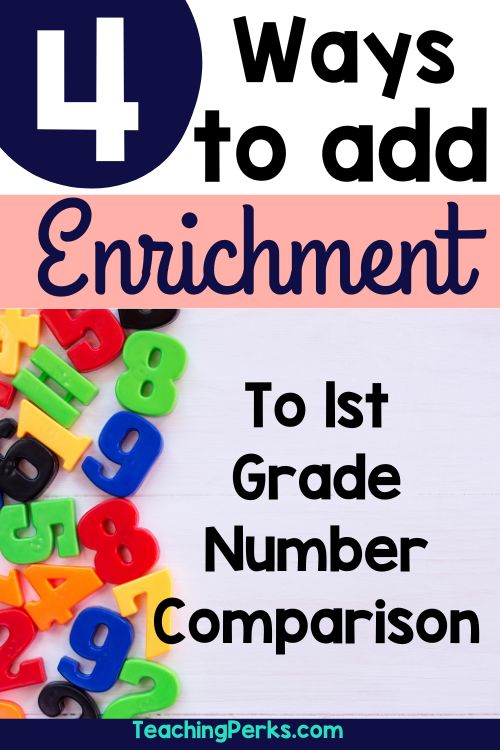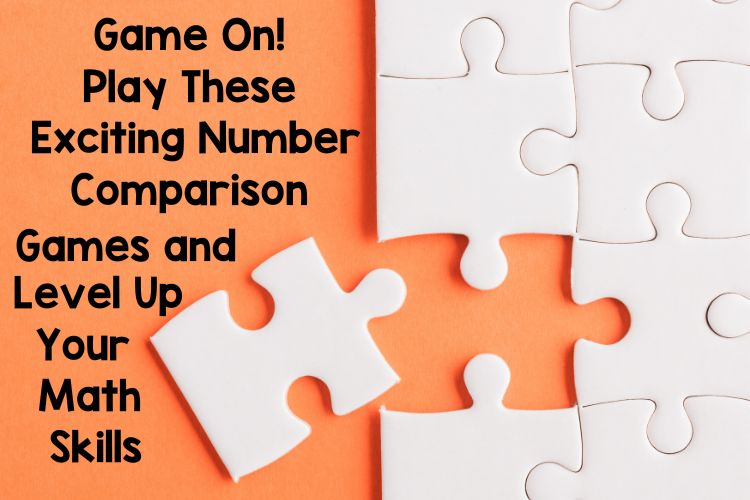Number comparison is an essential math skill for 1st graders. It is important to make the learning experience challenging and engaging to keep your high level students motivated and interested.


In this blog post, we will explore four creative ways to challenge your students that have mastered the basics of greater than less than and help them extend their number comparison skills. From number comparison riddles to number comparison with addition, these activities will encourage your students to think critically and logically. Let’s dive into these exciting activities and start having some fun with numbers!

Number Comparison Riddles
Read 2 riddles to the students and have them figure out what the numbers are. Once they have the two mystery numbers they can write the number comparison.
Example
Teacher: I am going to give you two riddles. You must solve both riddles and tell me which number is greater than and which is less than.
I am the sum of how many fingers two students have plus how many ears two students have.
20 + 4 = 24
I am the difference of how many students are in your class minus how many people are in your math group.
21 – 6 = 15
Students would say 24 is the greater number because 24 > 15.
Another extension would be to have students write the numbers in multiple forms.
For example, twenty-four > fifteen or 20 + 4 > 10 + 5
Number Comparison Mystery
Tell students you are thinking of a mystery number. Give them greater than/less than clues to figure out the number you are thinking of.

Example: 87
Teacher: The number I am thinking of is greater than 78 but less than 92.
Student: 81
Teacher: The number I am thinking of is more than 81 but less than 92.
Student: 89
Teacher: The number I am thinking of is fewer than 89 but greater than 86
Continue until students guess the number. You can also let students think of a mystery number and let the teacher or a partner guess their number as they give greater then/less than clues. You could also use numbers with a hundreds place.

Number Comparison Order
Give students 5 numbers and have them put them in order from greatest to least or least to greatest. Start with 5 two digit numbers and then move on to three-digit numbers. Have students use symbols when ordering the numbers. You can also have them explain orally or in writing why they chose to order the numbers the way they did.
Example: 43 < 49 < 58 < 61< 78
The student might say “I know that 4 tens is less than 5, 6, and 7 tens so I knew 43 and 49 would go first. I had to look at the ones place and knew that 3 was less than 4 so that told me 43 should be first with 49 second. Then I put the tens places from the other three numbers in order and knew it should be 58, 61 and then 78.

Number Comparison With Addition
Give students two addition problems. They will use symbols to compare the problems. You can ask them to explain orally or in writing how they got their answer.
Example: 23 + 17 _ 32 + 12
Answer: 23 + 17 < 32 + 12 because 40 < 44
Since these are bigger numbers to add you may want to show students before they begin how they can use what they have learned about with place value and base ten to solve. They could draw quick pictures and make groups of ten to find the sum. You could also do easier problems such as 7 + 9 ___ 8 + 10.

Number Comparison Conclusion
In conclusion, number comparison is an important math skill for first-grade students, and challenging them to extend their understanding beyond the basics is crucial to keeping them motivated and engaged. The four creative activities outlined in this blog post provide exciting ways to help students think critically and logically about number comparison. By making math fun and interactive, students are more likely to develop a love for learning and build a solid foundation for their future mathematical endeavors.
The ideas included in this post and many more just like these can be found in this place value lesson plan unit. Complete with 15 Daily lesson plans, differentiated two-sided work mats, differentiated independent practice pages, games, higher order thinking questions to ask during lessons, challenge extensions and so much more, these lessons will have you all set so that you don’t have to plan a thing!

Leave a Reply